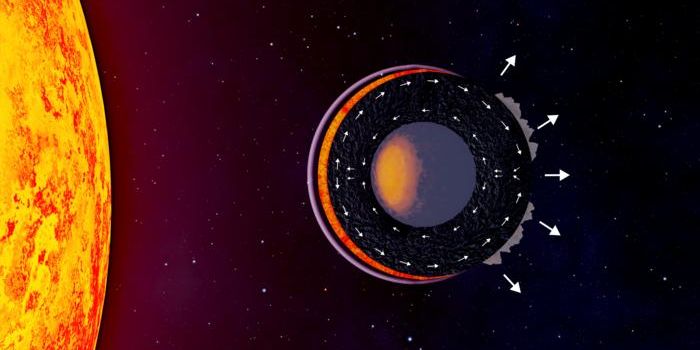The Secrets of a Peculiar Space Rock Lurking in the Kuiper Belt Are Revealed
All space rocks may look similar to the untrained eye, but scientists know how to tell them apart. Their composition, for example, can speak volumes about where they came from, whether that’s the asteroid belt, the Kuiper belt, or elsewhere.
But one space rock in particular, dubbed 2004 EW95, has researchers scratching their heads profusely. Its composition, rich in carbon and phyllosilicates, closely resembles something that we’d expect to find lurking in the asteroid belt. Instead, 2004 EW95 resides in the Kuiper belt.
Image Credit: ESO/M. Kornmesser
An international team of astronomers made the discovery after leveraging the power of various observation instruments installed on the European Southern Observatory’s Very Large Telescope (VLT). They’ve published their findings in the journal Astrophysical Journal Letters.
With its composition in mind, the researchers are almost entirely sure that 2004 EW95 didn’t form in the Kuiper belt where it has been found. Instead, it seems more likely that an unknown event bounced the object out of the asteroid belt between Mars and Jupiter, causing it to float into the outskirts of our solar system.
"The reflectance spectrum of 2004 EW95 was clearly distinct from the other observed outer Solar System objects," said study lead author Tom Seccull from Queen's University Belfast in the UK.
"It looked enough of a weirdo for us to take a closer look."
Related: NASA's New Horizons probe will observe a Kuiper Belt Object up close
The VLT’s X-Shooter and FORS2 instruments enabled the researchers to study light reflectivity on 2004 EW95’s surface, and this served as the primary indicator of its composition.
It wasn’t easy, especially given the space rock’s distance from Earth, but the researchers eventually gathered enough evidence to reach the conclusion that they did.
"It's like observing a giant mountain of coal against the pitch-black canvas of the night sky," added co-author Thomas Puzia from the Pontificia Universidad Católica de Chile.
Related: Why the Kuiper belt is so significant
Given the circumstances, 2004 EW95 serves a vital role as a piece of astronomical forensic evidence that paints a more detailed picture of the early solar system. Determining how it got from point A to point B, however, is another question that researchers have yet to answer indefinitely.
It should be interesting to see what other astronomers make of the findings in due time. Chances are, this won’t be the last observation of 2004 EW95…
Source: ESO









